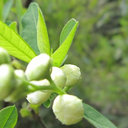Improved oral bioavailability of poorly water-soluble indirubin by a supersaturatable self-microemulsifying drug delivery system.
Palavras-chave
Resumo
BACKGROUND
Indirubin, isolated from the leaves of the Chinese herb Isatis tinctoria L, is a protein kinase inhibitor and promising antitumor agent. However, the poor water solubility of indirubin has limited its application. In this study, a supersaturatable self-microemulsifying drug delivery system (S-SMEDDS) was developed to improve the oral bioavailability of indirubin.
METHODS
A prototype S-SMEDDS was designed using solubility studies and phase diagram construction. Precipitation inhibitors were selected from hydrophilic polymers according to their crystallization-inhibiting capacity through in vitro precipitation tests. In vitro release of indirubin from S-SMEDDS was examined to investigate its likely release behavior in vivo. The in vivo bioavailability of indirubin from S-SMEDDS and from SMEDDS was compared in rats.
RESULTS
The prototype formulation of S-SMEDDS comprised Maisine™ 35-1:Cremophor(®) EL:Transcutol(®) P (15:40:45, w/w/w). Polyvinylpyrrolidone K17, a hydrophilic polymer, was used as a precipitation inhibitor based on its better crystallization-inhibiting capacity compared with polyethylene glycol 4000 and hydroxypropyl methylcellulose. In vitro release analysis showed more rapid drug release from S-SMEDDS than from SMEDDS. In vivo bioavailability analysis in rats indicated that improved oral absorption was achieved and that the relative bioavailability of S-SMEDDS was 129.5% compared with SMEDDS.
CONCLUSIONS
The novel S-SMEDDS developed in this study increased the dissolution rate and improved the oral bioavailability of indirubin in rats. The results suggest that S-SMEDDS is a superior means of oral delivery of indirubin.




